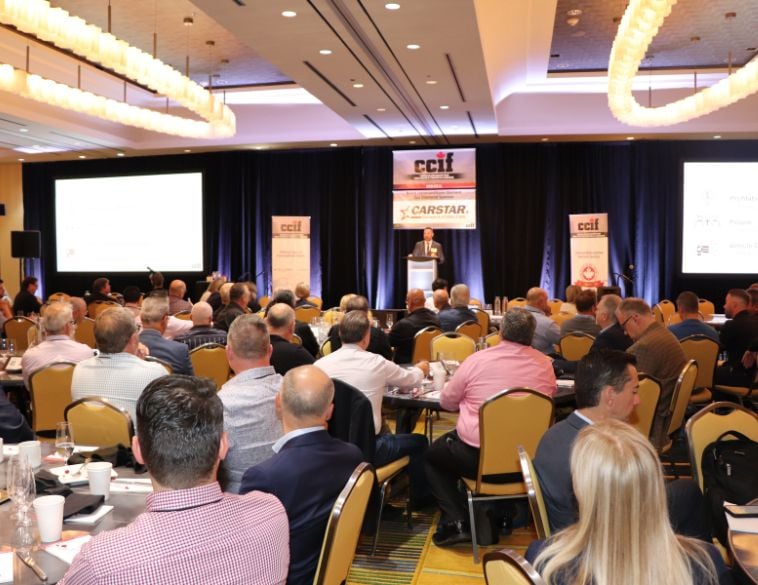The idea of performing systematic pre and post-repair scanning and calibration of vehicle electronics is gaining traction in the collision repair industry.
Which vehicle systems are affected by a collision? We all know that the network of vehicle electronic control modules and systems is interconnected, so it is extremely difficult to measure the full extent of damage to these systems without the help of a pre-repair scan prior tovehicle teardown.
During a Collision Management magazine interview conducted at CCIF Fredericton, ALLDATA’s Jean-Luc Sauriol was adamant about a specific key issue: “By 2020, 35 percent of a vehicle’s value will be made up of electronic components, and the figure is expected to climb to 50 percent by 2030. My message to collision repair shops who are not interested by electronics is this: “Are you ready to relinquish 50 percent of your revenue?”
Not so fuzzy logic
Sauriol is convinced that the logic in performing pre and post-repair scans and calibration is sound, and will soon become a standard industry practice. “What was the damage prior to the collision? How can you perform an accurate estimate of the work to be performed if you can’t see the damage? This practice will eliminate grey areas, provide a clear picture to the insurer and above all else, ensure that the vehicle’s passengers are back on the road in a in a pre-collision, safe vehicle.”
A growing number of vehicle manufacturers are making the pre-repair scan mandatory. Sauriol believes that this procedure should be performed on every vehicle. “It’s just common sense,” he insists. “You can be looking at damage that is seemingly superficial and next thing you know, a scan reveals that $10,000 of electronics must be replaced to make the vehicle roadworthy. Pre-repair scanning saves time and money while improving insurer relationships, so I strongly believe that shops should get on this immediately.”
He suggests that shops go at it gradually by starting with pre and post-repair scanning before graduating to the programming and replacement of defective modules. “Identify a member of your team who’s passionate about computers and let them run with it. Provide the necessary training, and shop around for a quality scan tool that applies to the most popular vehicles cycling through your shop. Do this, and you’ll already be ahead of the game.”
Accurate picture
During this CCIF session, I-CAR trainer Brandon Roy was also beating the same drum. “By plugging in the scan tool, you get all sorts of diagnostic trouble codes, or DTCs. These codes relate directly to various components, sensors and modules that require replacement.“
It will also indicate which systems require post-repair calibration, such as airbags, backup camera or collision avoidance hardware. It’s all there, and it’s accurate. It also provides objective proof as to the quality of the work performed when delivering the vehicle to the customer.”


